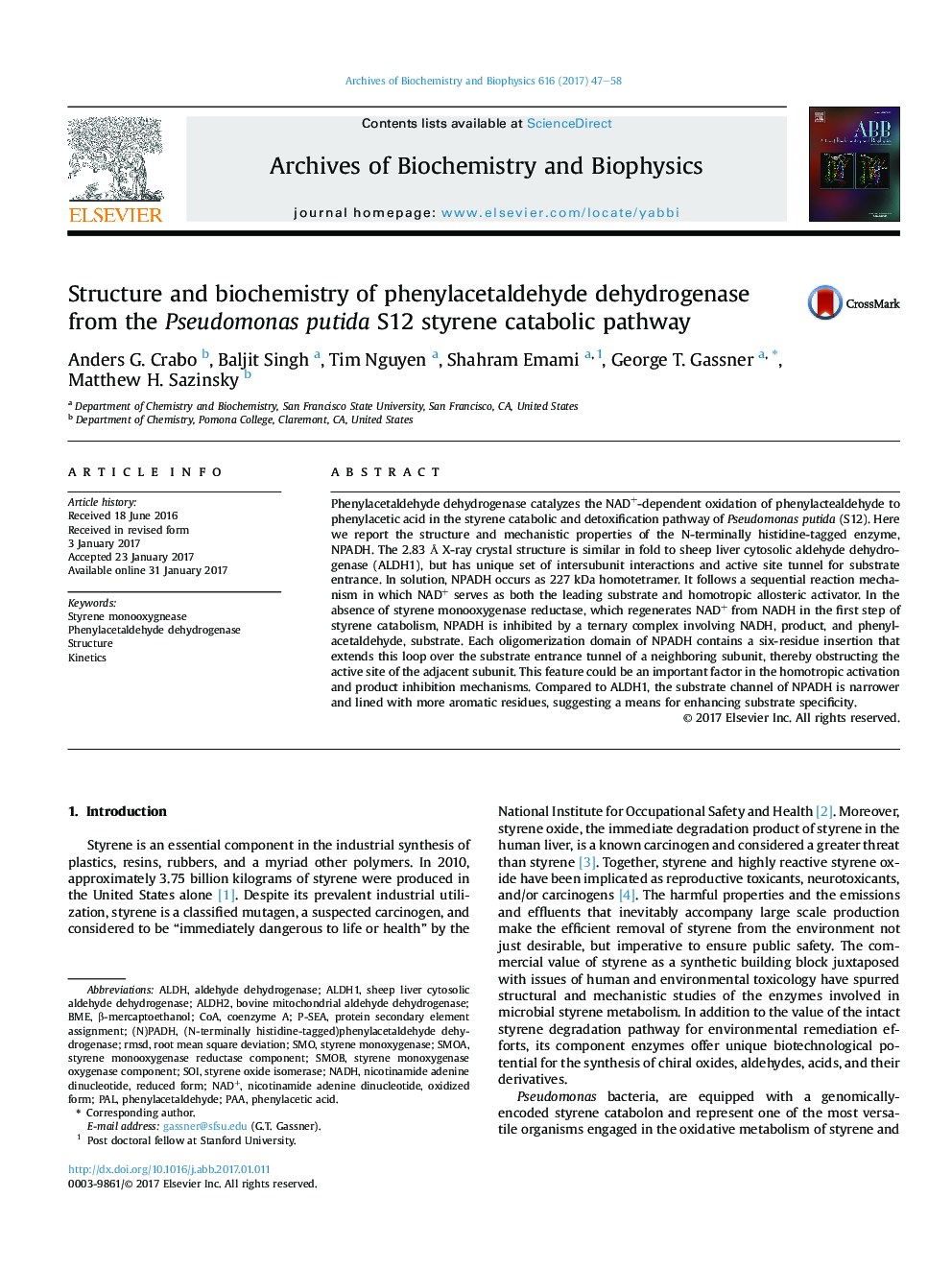| Article ID | Journal | Published Year | Pages | File Type |
|---|---|---|---|---|
| 5504469 | Archives of Biochemistry and Biophysics | 2017 | 12 Pages |
Abstract
Phenylacetaldehyde dehydrogenase catalyzes the NAD+-dependent oxidation of phenylactealdehyde to phenylacetic acid in the styrene catabolic and detoxification pathway of Pseudomonas putida (S12). Here we report the structure and mechanistic properties of the N-terminally histidine-tagged enzyme, NPADH. The 2.83Â Ã
X-ray crystal structure is similar in fold to sheep liver cytosolic aldehyde dehydrogenase (ALDH1), but has unique set of intersubunit interactions and active site tunnel for substrate entrance. In solution, NPADH occurs as 227Â kDa homotetramer. It follows a sequential reaction mechanism in which NAD+ serves as both the leading substrate and homotropic allosteric activator. In the absence of styrene monooxygenase reductase, which regenerates NAD+ from NADH in the first step of styrene catabolism, NPADH is inhibited by a ternary complex involving NADH, product, and phenylacetaldehyde, substrate. Each oligomerization domain of NPADH contains a six-residue insertion that extends this loop over the substrate entrance tunnel of a neighboring subunit, thereby obstructing the active site of the adjacent subunit. This feature could be an important factor in the homotropic activation and product inhibition mechanisms. Compared to ALDH1, the substrate channel of NPADH is narrower and lined with more aromatic residues, suggesting a means for enhancing substrate specificity.
Keywords
Related Topics
Life Sciences
Biochemistry, Genetics and Molecular Biology
Biochemistry
Authors
Anders G. Crabo, Baljit Singh, Tim Nguyen, Shahram Emami, George T. Gassner, Matthew H. Sazinsky,
